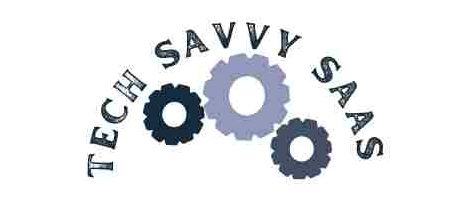The significance of energy harvesting technologies for small electronic devices cannot be overstated in our modern, technology-driven world. As we witness a surge in the use of small electronic devices such as sensors, wearables, and other portable gadgets, the need for sustainable and efficient power sources has become increasingly apparent.
In this context, the importance of sustainable power sources for electronic devices has become a focal point of technological advancements. Conventional power solutions, often reliant on non-renewable resources, are not only finite but also contribute to environmental degradation. As a result, the integration of sustainable and eco-friendly power solutions has emerged as a critical consideration for the future of small electronic devices.
This blog post aims to delve into the realm of energy harvesting technologies and their pivotal role in providing sustainable power sources for small electronic devices. We will explore various energy harvesting methods, emphasizing their applications in cutting-edge fields such as wearable electronics, self-powered systems, and the burgeoning domain of nanoenergy.

Harvesting Technologies Overview
In the realm of powering small electronic devices, a comprehensive understanding of various energy harvesting technologies is essential. This section provides an insightful overview of three key technologies: the triboelectric nanogenerator (TENG), solar energy harvesting, and vibration energy harvesting, among others.
TENG Technology
The Triboelectric Nanogenerator (TENG) stands out as a revolutionary technology, capitalizing on the principles of triboelectrification. This process involves the generation of electric charges through the friction of different materials. TENG has demonstrated remarkable efficiency in harnessing energy from ambient sources, making it a promising solution for small electronic devices.
Solar energy harvesting
Harnessing the power of the sun, solar energy harvesting has become a cornerstone in the quest for sustainable power sources. Photovoltaic cells convert sunlight into electrical energy, providing an eco-friendly and renewable solution for electronic devices. The efficiency of solar harvesting systems is continually improving, making them increasingly viable for a wide range of applications.
Vibration Energy Harvesting
Vibration energy harvesting leverages mechanical vibrations in the device’s environment to generate electrical energy. Devices such as piezoelectric energy harvesters utilize the mechanical strain induced by vibrations to produce electric charges. This method has found applications in scenarios where constant motion or vibrations are present, offering a continuous and reliable power source.
Frequency and Efficiency Considerations
An integral part of evaluating energy harvesting technologies lies in understanding the frequency and efficiency of these systems. The frequency at which a technology operates directly impacts its suitability for specific applications. For instance, kinetic energy harvesting methods may be well-suited for devices experiencing frequent motion, while electromagnetic energy harvesters may excel in environments with varying electromagnetic waves.
Efficiency is another critical factor in determining how effectively a harvesting system can convert available energy into electrical power. Evaluating the efficiency of each technology provides insights into their practicality and effectiveness in real-world applications.
TENG System Design and Components
The Triboelectric Nanogenerator (TENG) represents a groundbreaking approach to energy harvesting, relying on the principles of triboelectrification. Understanding the intricate components and design considerations is paramount for unlocking the full potential of TENG technology.
TENG System Components
- Cantilever: A crucial component in TENG systems, the cantilever serves as a flexible element that undergoes bending or deformation in response to external forces, such as mechanical vibrations or human motion.
- Flexible Substrate: The choice of a flexible substrate is pivotal in TENG design. It accommodates the movement of the cantilever and enhances the adaptability of the system to various environments.
- Triboelectric Nanogenerator: At the heart of TENG lies the triboelectric nanogenerator, which is responsible for converting mechanical energy into electrical energy through the process of triboelectrification. This component is often composed of materials with differing electron affinities.
Design Considerations for Effective Energy Harvesting
Achieving optimal performance in TENG technology necessitates meticulous design considerations. The following factors play a crucial role:
- Smart Materials: The integration of advanced and responsive materials enhances the efficiency of TENG systems. Smart materials with unique mechanical and electrical properties contribute to improved energy conversion.
- Flexible Substrate: The selection of a flexible substrate is pivotal, allowing the TENG system to conform to various shapes and deformations. This flexibility is especially beneficial in applications where constant motion or irregular surfaces are involved.
Understanding the synergy between these components and design considerations is fundamental to harnessing the full potential of TENG technology.
Applications of TENG in Small Electronic Devices
Harnessing the capabilities of TENG technology opens the door to a myriad of applications in small electronic devices, transforming them into self-sufficient power sources. This section explores a diverse range of applications, focusing on their efficacy in different scenarios.
Showcase of TENG Applications
- Sensors: TENG-based sensors demonstrate remarkable sensitivity and efficiency, making them ideal for various applications, including environmental monitoring and health tracking.
- Wearables: TENG technology finds extensive use in wearable devices, capitalizing on continuous human motion to generate power for devices such as smartwatches, fitness trackers, and electronic textiles.
- Other Small Electronic Devices: TENG’s adaptability extends to a multitude of small electronic devices, powering items such as remote sensors, IoT devices, and even electronic skin.
Benefits and Challenges
Implementing TENG technology comes with a set of unique advantages and challenges. Understanding these aspects is vital for informed decision-making when adopting TENG for specific applications.
Benefits:
- Harvesting Human Motion: TENG excels at capturing energy from human motion, offering a sustainable power source for wearables and sensors.
- Biomechanical Energy Harvesting: The ability to harness biomechanical energy broadens the scope of TENG applications, providing a continuous and renewable power supply.
Challenges:
- Electronic Skin Integration: While promising, integrating TENG into electronic skin presents challenges related to flexibility, durability, and long-term performance.
- Self-Powered Sensors: Implementing TENG in self-powered sensors requires addressing issues such as power storage and the variability of energy sources.
Other Energy Harvesting Technologies
Exploring beyond TENG, a diverse landscape of energy harvesting technologies emerges, each with unique capabilities and applications. This section delves into the world of alternative methods, starting with the widely adopted and versatile solar energy harvesting.
Solar energy harvesting
Overview of Solar Energy Harvesting
Solar energy harvesting stands as a cornerstone in the quest for sustainable and renewable power sources. The process involves capturing photons from sunlight and converting them into electrical energy through photovoltaic cells. This section provides an in-depth overview of how solar energy is harnessed for small electronic devices.
Applications and efficiency
- Wearable Energy Harvester: Solar energy’s adaptability makes it particularly well-suited for wearables. Wearable energy harvester systems utilize photovoltaic cells integrated into wearable devices, allowing them to generate power during outdoor activities or exposure to light.
- Portable Electronic Devices: Solar energy is widely used to power small electronic devices such as smartphones, GPS trackers, and outdoor sensors. The efficiency of solar panels has significantly improved, making them viable for a broad range of applications.
- Remote and IoT Devices: In scenarios where constant power supply is challenging, solar energy becomes an attractive solution. Remote sensors and IoT devices can operate efficiently, leveraging solar energy to sustain their functionality.
- Efficiency Considerations: Advances in solar panel technologies have led to increased efficiency, enabling more significant energy harvests even in low-light conditions. This section explores efficiency improvements and considerations in the design of solar-powered systems.
Vibration and motion-harvesting
In the quest for sustainable power solutions, vibration and motion-based energy harvesting technologies present innovative approaches to tapping into ambient energy sources. This section provides a detailed exploration of these technologies, shedding light on their principles and applications.
Principles of Vibration Harvesting
Vibration-harvesting revolves around the conversion of mechanical vibrations into electrical energy. This process is often achieved through the use of piezoelectric energy harvesters, where mechanical strain induces the generation of electric charges. Understanding the underlying principles is crucial for unlocking the potential of vibration-based energy harvesting.
Devices and scenarios
- Piezoelectric Energy Harvester: At the core of vibration harvesting, piezoelectric materials play a pivotal role. These materials exhibit a unique property: the generation of electric charge when subjected to mechanical strain. Devices incorporating piezoelectric energy harvesters can harness vibrations from various sources, such as machinery, vehicles, or even human motion.
- Effective Scenarios: Vibration harvesting proves highly effective in scenarios where constant motion or vibrations are present. This includes industrial machinery, transportation systems, and wearable devices that can utilize the wearer’s movements to generate power.
As we delve into the intricacies of vibration and motion-based energy harvesting, we uncover the diverse applications and transformative potential these technologies hold for powering small electronic devices.
RF Harvesting and Rectennas
Radio frequency (RF) energy harvesting introduces a unique paradigm, capturing and converting ambient electromagnetic waves into electrical energy. The integration of rectennas (rectifying antennas) forms a critical aspect of this technology, facilitating the conversion process. This section provides an in-depth exploration of RF harvesting and rectennas.
Rectennas in action
- Antenna: The antenna serves as the initial receptor for radio frequency waves. Understanding the role of the antenna in capturing these waves is fundamental to the RF energy-harvesting process.
- Voltage Generation: Once captured, the radio frequency waves undergo rectification, resulting in the generation of an electric voltage. This voltage becomes the power source for small electronic devices.
- Efficiency through Rectifiers: The rectifier component plays a crucial role in ensuring efficient conversion. We explore the different types of rectifiers and their impact on the overall efficiency of the RF energy harvesting system.
Applications and efficiency
- Capturing and Converting Waves: The applications of RF harvesting are diverse, ranging from powering remote sensors to enabling wireless charging. Understanding the efficiency of capturing and converting radio frequency waves is essential for optimizing these applications.
- Antenna, Voltage, and Rectifier: The synergy between the antenna, voltage generation, and rectifier components determines the overall efficiency of the RF energy harvesting system. This section explores the intricate balance required for optimal performance.
Materials and Design Considerations
In the realm of energy harvesting technologies, the choice of materials plays a pivotal role in determining efficiency, adaptability, and overall performance. This section delves into the intricate world of materials and design considerations, emphasizing the importance of selecting the right components for optimal energy harvesting.
Materials for Energy Harvesters
The success of energy-harvesting technologies often hinges on the selection of appropriate materials. Advanced materials have become a focal point for pushing the boundaries of efficiency and functionality. This exploration delves into the diverse range of materials employed in energy harvesters.
- Flexible Substrate: The use of a flexible substrate is a key consideration, especially in technologies like triboelectric nanogenerators (TENG). This flexibility allows for dynamic movement and adaptability, crucial for applications in wearable devices and other environments with varying conditions.
- Advanced Materials: Beyond traditional materials, advancements in materials science have introduced a plethora of options with unique properties. These materials contribute to the development of more efficient and versatile energy-harvesting systems.
Role of Materials in Enhancing Efficiency
Understanding the role of materials in energy harvesting is essential for optimizing system efficiency. This section focuses on two key technologies—triboelectric nanogenerators (TENG) and piezoelectric energy harvesters—to illustrate how materials impact their performance.
Triboelectric nanogenerators (TENG)
In TENG systems, the choice of materials with contrasting triboelectric properties is fundamental. The process relies on the generation of electric charges through friction, necessitating careful selection of materials to maximize charge separation.
- Triboelectric Materials: TENG benefits from materials with distinct triboelectric properties, creating a potential difference upon contact and separation. Exploring the compatibility and efficiency of these materials enhances the overall performance of TENG technology.
Piezoelectric energy harvesters
For piezoelectric energy harvesters, materials capable of converting mechanical strain into electrical charges are crucial. The effectiveness of this process relies on the inherent properties of the chosen materials.
- Piezoelectric Materials: Certain crystals, ceramics, and polymers exhibit piezoelectric properties. Understanding how these materials respond to mechanical strain aids in designing efficient piezoelectric energy harvesting systems.
Structural Design for Enhanced Performance
The structural design of energy harvesting systems plays a pivotal role in determining their efficiency, adaptability, and overall performance. This section delves into the intricate world of design considerations, showcasing how thoughtful structural design can elevate the capabilities of energy harvesting technologies.
Impact of Design on Efficiency
The efficiency of an energy-harvesting system is intricately tied to its structural design. The careful consideration of various elements, from the arrangement of components to the overall form, significantly influences the system’s ability to capture and convert ambient energy. This discussion explores key design considerations and their impact on efficiency.
- Schematic Diagram: Visualizing the structural design through a schematic diagram provides insights into the arrangement and connections of components. Understanding the system’s architecture aids in identifying potential bottlenecks and optimizing the overall design for enhanced efficiency.
- Wide Range Design Considerations: Energy harvesting systems encounter diverse environments and conditions. A successful design must account for this variability, ensuring adaptability across a wide range of scenarios. Exploring design considerations that accommodate fluctuations in frequency, amplitude, and energy sources is crucial for a versatile and effective system.
Case Studies on Successful Design Implementations
Real-world applications often serve as the ultimate test for the efficacy of energy harvesting system designs. This section delves into case studies that highlight successful design implementations, offering valuable insights into the principles and strategies that contribute to optimal performance.
- SEM Image: Scanning Electron Microscopy (SEM) provides a closer look at the microstructure of successful designs. Case studies featuring SEM images offer a visual exploration of how specific design choices impact the arrangement and interaction of materials at a microscopic level.
- Output Performance: Ultimately, the success of a design is measured by its output performance. Case studies examining performance metrics, such as energy conversion efficiency and power output, provide a quantitative assessment of the effectiveness of a particular structural design.
Quick Takeaways
As we conclude our exploration into the realm of energy harvesting technologies for small electronic devices, let’s recap the key points covered in this comprehensive blog post.
- Diverse Landscape: We navigated through a diverse landscape of energy harvesting technologies, encompassing Triboelectric Nanogenerator (TENG), solar energy harvesting, vibration and motion-based harvesting, and RF harvesting with rectennas.
- TENG Technology: Explored the intricacies of TENG technology, unraveling its components such as cantilevers, flexible substrates, and triboelectric nanogenerators. Emphasized design considerations, including the role of smart materials and flexible substrates.
- Other Energy Harvesting Technologies: Delve into the efficiency and applications of solar energy harvesting, showcasing its adaptability for wearable devices. Explored the principles of vibration harvesting using piezoelectric energy harvesters and the unique capabilities of RF harvesting with rectennas.
- Materials and Design Considerations: Explored the crucial role of materials in energy harvesting technologies, emphasizing advanced materials and their impact on efficiency. Discussed the significance of structural design for enhanced performance, featuring schematic diagrams and case studies with SEM images.
Highlights of Effective Energy Harvesting Technologies:
- Wearable Devices: Among the most effective applications, energy harvesting technologies shine in the realm of wearable devices. TENG and solar technologies demonstrate significant potential for powering smartwatches, fitness trackers, and electronic textiles, providing a sustainable and continuous power source.
- Self-Powered Sensors: The emergence of self-powered sensors showcases the adaptability of energy harvesting technologies in diverse applications. TENG and vibration harvesting play a pivotal role in powering sensors for environmental monitoring, health tracking, and IoT devices.
1. What is the most efficient energy-harvesting technology for small electronic devices?
Determining the most efficient energy harvesting technology involves considering the specific application and environmental conditions. Technologies like triboelectric nanogenerators (TENG), solar energy harvesting, and RF harvesting each have unique strengths. The choice depends on factors such as energy source availability, device mobility, and power requirements.
2. How can design improve the performance of energy harvesting systems?
Design plays a crucial role in optimizing energy-harvesting systems. Strategic placement of components, thoughtful selection of materials, and adaptability to varying environmental conditions contribute to enhanced efficiency. A well-designed system ensures effective energy capture and conversion, maximizing overall performance.
3. Are there any limitations to TENG technology in small electronic devices?
While TENG technology offers promising advantages, it does have limitations. Challenges include the need for sufficient mechanical movement to generate power, potential wear and tear on components over time, and limitations in power output density. Addressing these challenges is essential for the widespread adoption of TENG in small electronic devices.
4. How do materials impact the efficiency of energy harvesters?
Materials play a critical role in determining the efficiency of energy harvesters. The triboelectric and piezoelectric properties of materials influence their ability to generate electrical charges. The right materials enhance charge separation and conversion, directly impacting the overall efficiency of energy-harvesting systems.
5. Can energy-harvesting technologies completely replace traditional power sources for small electronic devices?
While energy harvesting technologies offer sustainable and eco-friendly solutions, complete replacement of traditional power sources may not be feasible in all scenarios. The feasibility depends on factors such as power requirements, device usage patterns, and energy source availability. Energy harvesting technologies often complement traditional power sources for a more balanced and sustainable energy solution.
Conclusion
In conclusion, the exploration of energy harvesting technologies for small electronic devices underscores their transformative potential in creating sustainable and self-powered systems. The recap of key FAQs highlights the need for thoughtful consideration in technology selection, design optimization, and addressing limitations.
The continuous pursuit of knowledge and innovation is crucial for unlocking the full potential of energy harvesting. Ongoing research, highlighted through comprehensive reviews and participation in international conferences, fosters collaboration and accelerates advancements in the field.
More Post






